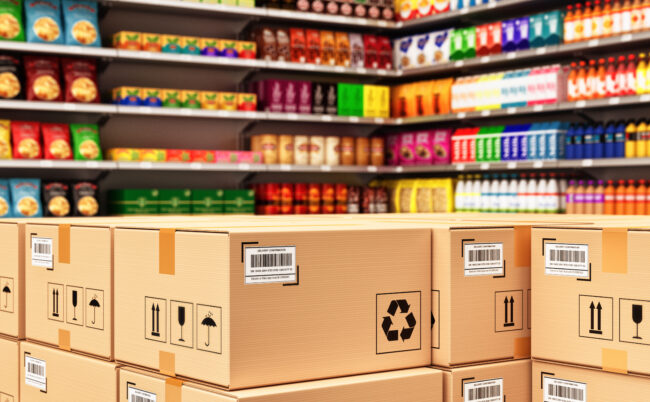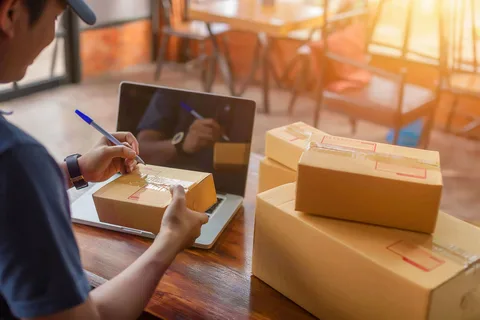In the dynamic landscape of consumer goods, boxed packaging stands out as a crucial element that can make or break a product’s success. Beyond simply
In the dynamic landscape of consumer goods, boxed packaging stands out as a crucial element that can make or break a product’s success. Beyond simply holding and protecting products, boxed packaging acts as a powerful branding tool, enhances consumer experience, and embraces innovative materials and technologies that push the boundaries of traditional packaging.
This article delves into how boxed packaging influences brand perception, creates memorable consumer journeys, and adapts to new challenges through innovation. Whether you’re a manufacturer, retailer, or marketer, understanding the multi-faceted impact of boxed packaged goods can give you a competitive edge.
Must visit: swiftnewsnow

The Strategic Role of Boxed Packaging in Branding
A product’s packaging is often the first tangible interaction a customer has with a brand. Boxed packaging offers a unique canvas to tell brand stories and communicate values.
1. Brand Identity and Visual Impact
The shape, color, typography, and textures on a box collectively build the brand’s visual identity. For example, a minimalist design with muted tones might signal luxury and sophistication, while bold colors and playful fonts suggest fun and energy.
Consistency across all packaging creates brand recognition, even from a distance on retail shelves or in digital product listings.
2. Emotional Connection Through Packaging
Well-designed boxed packaging evokes emotions that influence purchase decisions. It can inspire trust, excitement, nostalgia, or exclusivity.
Packaging that tells a story—whether through imagery, copy, or even tactile elements like embossing—creates a deeper connection between the brand and consumer.
3. Differentiation in a Crowded Market
In competitive categories like cosmetics, food, or electronics, distinctive boxed packaging helps products stand out. Unique shapes, innovative closures, or interactive features can make a box instantly recognizable and memorable.
Enhancing Consumer Experience with Boxed Packaged Goods
A great product paired with poorly designed packaging can diminish customer satisfaction. Conversely, thoughtful packaging elevates the overall user experience.
1. The Unboxing Phenomenon
Unboxing has become a cultural event—shared widely on social media platforms. A well-crafted unboxing experience includes layers of discovery, tactile pleasure, and brand storytelling that consumers enjoy and share.
This drives organic marketing and fosters brand loyalty.
2. Ease of Use and Accessibility
Packaging that’s easy to open, resealable, or reusable enhances customer convenience. Special considerations such as tactile cues for visually impaired users or easy-pour spouts improve inclusivity.
3. Informative and Transparent Packaging
Clear product information, ingredient lists, usage instructions, and origin stories printed directly on or inside the box empower consumers to make informed choices and build trust.
Innovation in Materials and Technology for Boxed Packaging
Modern challenges like sustainability, cost efficiency, and consumer demand for functionality have accelerated innovation in boxed packaging materials and technology.
1. Sustainable Materials
The rise of environmental awareness has pushed brands to adopt:
- Recycled paper and cardboard reducing the need for virgin materials.
- Plant-based and compostable materials such as bagasse (sugarcane fiber), mushroom mycelium, and hemp.
- Water-based inks and adhesives that minimize chemical pollutants.
2. Smart Packaging Technologies
Incorporating digital technologies into boxes enhances interactivity and security:
- QR codes provide product info, promotions, or authenticity verification.
- NFC (Near Field Communication) chips enable contactless interaction with smartphones.
- Temperature-sensitive inks can show if a product has been exposed to unfavorable conditions.
3. Lightweight and Durable Designs
Advanced structural engineering in box design reduces material use while maintaining strength, lowering shipping costs and environmental impact.
4. Customization and On-Demand Printing
Digital printing enables small-batch, personalized, or seasonal packaging without massive inventories, improving flexibility and reducing waste.
Case Studies: How Brands Excel with Boxed Packaging
1. Tesla
Tesla’s boxed packaging for charging accessories mirrors the brand’s sleek, futuristic design philosophy—minimalistic, black, and highly functional.
2. Lush Cosmetics
Lush uses recycled and biodegradable boxed packaging with bold, playful graphics reflecting their eco-conscious and fresh brand image.
3. Peloton
Peloton’s boxed packaging focuses heavily on protection and premium unboxing, matching their high-end fitness brand.
4. Tiffany & Co.
The iconic blue box is an integral part of Tiffany’s brand identity, symbolizing luxury and exclusivity.
Best Practices for Creating Impactful Boxed Packaging
1. Align Packaging with Brand Values
Ensure the packaging reflects your company’s mission—whether it’s luxury, sustainability, or innovation.
2. Prioritize User Experience
Test packaging designs with real users to identify pain points or confusion.
3. Leverage Storytelling
Use packaging space creatively to tell your brand or product story.
4. Invest in Sustainability
Choose materials and designs that minimize environmental impact.
5. Use Technology Thoughtfully
Integrate smart packaging where it adds genuine consumer value.
FAQs: Boxed Packaged Goods
1. How does boxed packaging influence brand loyalty?
It creates memorable first impressions and repeatable positive experiences, fostering emotional connections that encourage consumers to return.
2. Are sustainable boxes more expensive?
Initially, some sustainable materials can cost more, but efficiencies, consumer demand, and regulatory incentives are making them increasingly affordable.
3. Can I customize boxed packaging for small runs?
Yes, digital printing and on-demand services allow customization even for small quantities without high costs.
4. What’s the best way to make packaging user-friendly?
Design with the end user in mind: easy opening, clear instructions, resealable features, and accessibility.
5. How can smart packaging improve consumer engagement?
By connecting physical products to digital content, offering authenticity verification, and interactive experiences that build brand affinity.
6. Does packaging really affect purchase decisions?
Yes, packaging can be as influential as the product itself in shaping buying behavior, especially for new or premium products.
7. How do I balance aesthetics and sustainability in packaging?
Use eco-friendly materials that also allow high-quality printing and design. Avoid unnecessary embellishments and focus on minimalist elegance.
Conclusion
Boxed packaged goods serve as more than just protective containers—they are vital touchpoints for branding, consumer engagement, and innovation. By thoughtfully designing packaging that aligns with brand identity, prioritizes consumer experience, and leverages new materials and technologies, businesses can create meaningful connections that drive loyalty and growth.
As the market evolves, the brands that invest in smart, sustainable, and beautiful boxed packaging will not only meet but exceed consumer expectations, turning every box into an opportunity to impress and inspire.




COMMENTS